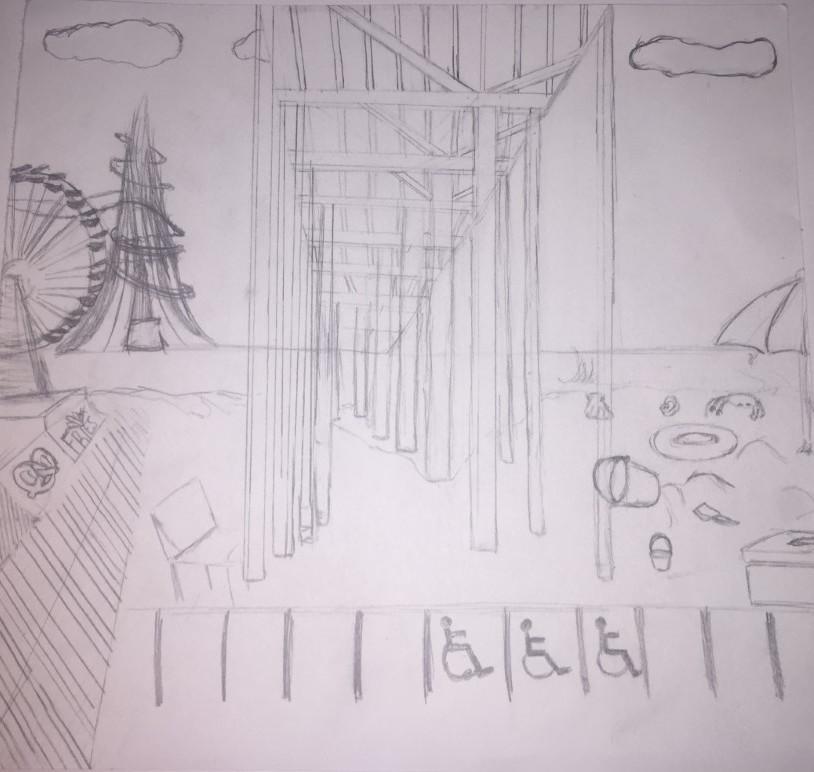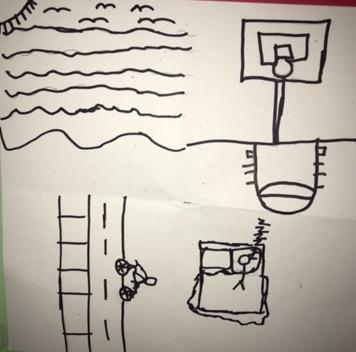Joan Miró grew up in Spain, a country in Europe, in a region called Catalonia. As an adult, he moved far away, but every summer he returned to his family’s village to visit. Miró made this painting of his family’s farm, which he loved very much. Miró painted parts of the landscape surrounding the farm in many of his artworks.

Language
Look
Look for different shapes—circles, squares, triangles.
Draw an imaginary line dividing the painting into two parts. What is on either side of your line?
List all the different animals you can find.
Do you think this is a real place or an imaginary place? Why?
Imagine you could visit this farm. Which part of it would you explore first?
What would you ask the artist about this work?
Read
A New Home (Spanish language version: Un Nuevo Hogar)
by Tania de Regil
A boy moving from New York to Mexico City and a girl moving from Mexico City to New York express their fears about leaving home to live in a new and unfamiliar place.
Miró’s Magic Animals
by Antony Penrose
Tony is a boy whose parents are artists, and Tony is fascinated by his parents' friend, Miró. Tony explores the art that Miró made, with a special interest in the animals in his paintings.
Make: Create a collage
You Will Need
- Paper
- Your favorite drawing supplies
Before you begin, close your eyes and imagine that you’re visiting your favorite place: the beach, the library, a relative’s house, or somewhere else that is special to you. What is it like there? What do you do there? List the things—both big and small—you might include in a drawing of this place.
When you’re ready to draw, fold the paper in half, and then in half again. Open it out flat. Notice how the creases divide the paper into four sections. As you draw, try to remember your special memories of this place. Do any new details come to mind? Put different memories of the place in each of the four sections.
Vocab Bank
- crease
- landscape
- relative
Download
Art Tales: Coloring and Cut-Outs booklet (PDF, 3.5 MB)
Art Tales for Pre-K (PDF, 7.2 MB)
Primeros Pasos En El Arte (PDF, 7.5 MB)
Primeros Pasos En El Arte: Colorear y Recortes (PDF, 3.7 MB)
Miró on the Farm lesson plan
An Eye for Art: Joan Miró teaching resource (PDF, 9.4 MB)
Visit
Register for the Art Tales pre-K school tour
Submit Student Work
Send images of your students' projects that follow these activities - email [email protected]
You may also like

Educational Resource: Art Starters: Louise Bourgeois
A lesson for preschool to kindergarten students about artist Louise Bourgeois' sculpture Spider. Students learn how to look at this sculpture, what you can read to learn more, how to create your own symbolic sculpture, and a list of vocabulary terms related to this activity.

Educational Resource: Art Tales: Alma Thomas
A lesson for preschool to kindergarten students about artist Alma Thomas’ painting Pansies in Washington. Students learn how to look at this painting, what you can read to learn more, how to create a color square, and a list of vocabulary terms related to this activity.

Educational Resource: Art Starters: Henri Rousseau
A lesson for preschool to kindergarten students about artist Henri Rousseau’s painting Tropical Forest with Monkeys. Students learn how to look at this painting, what you can read to learn more, how to create imaginary jungle, and a list of vocabulary terms related to this activity.




